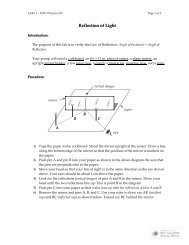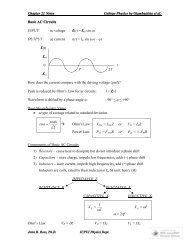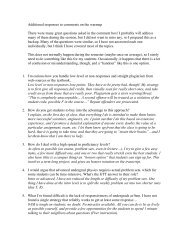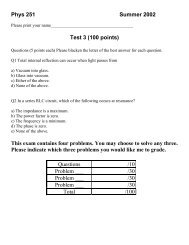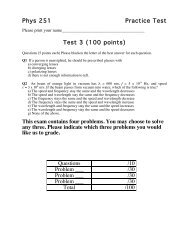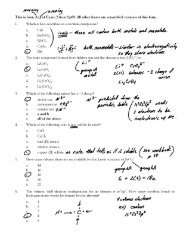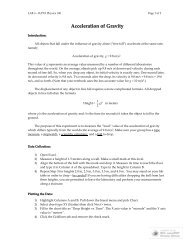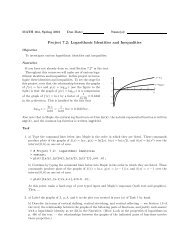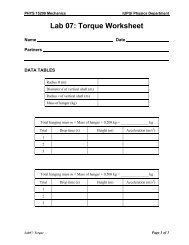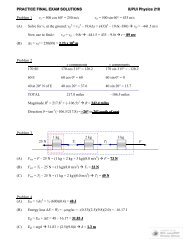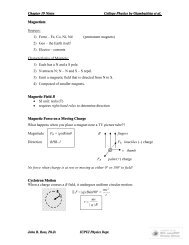Lab01 - Web Physics - IUPUI
Lab01 - Web Physics - IUPUI
Lab01 - Web Physics - IUPUI
Create successful ePaper yourself
Turn your PDF publications into a flip-book with our unique Google optimized e-Paper software.
<strong>IUPUI</strong> <strong>Physics</strong> Department218/P201 LaboratoryA digit is a significant figure if it is(a) any nonzero number;(b) a trailing zero after the decimal point;(c) any zero between two significant digits.Examples:3.00 3 sig figs 1.0070 5 sig figs800 1 sig fig 800.0 4 sig figs3.24×10 -5 3 sig figs 0.00324 3 sig figsIII. Calculations with Significant FiguresSuppose we add 1.29 and 4.5. If these are “perfect” numbers, then their sum isobviously 5.79. But, if these numbers are measured, then we need to take into accounttheir uncertainties in order to properly compute the sum:1.29???...+ 4.5???? ...But how is it possible to add certain digits to uncertain digits such as 9 + ? in the thirdcolumn? We need to use the following rule:Whenever you add or subtract experimental numbers, the result shouldhave the greatest uncertainty (i.e. fewest digits to the right of thedecimal).In the above example, our final answer must be rounded to the nearest 0.1 since 4.5has the greater uncertainty. Our answer is 5.8.Other arithmetic operations also have special rules to keep the uncertainties in check:Examples:Whenever you multiply or divide experimental numbers, the resultshould have the least number of significant figures.Whenever you raise an experimental number to a power or root, theresult should have the same number of significant figures.123,400 ÷ 5 = 20,000 (1 sig fig)144 .0 = 12.00 (4 sig figs)2π(6.60 × 10 -15 ) = 4.14 × 10 -14 (3 sig figs)Note in the last example that 2 and π are perfect numbers, which have no uncertainty!This is true for all integers, rational numbers, and special mathematical constants thatappear in physics formulas (-5, ¾, e, 2 , etc.)Page 2 of 8



